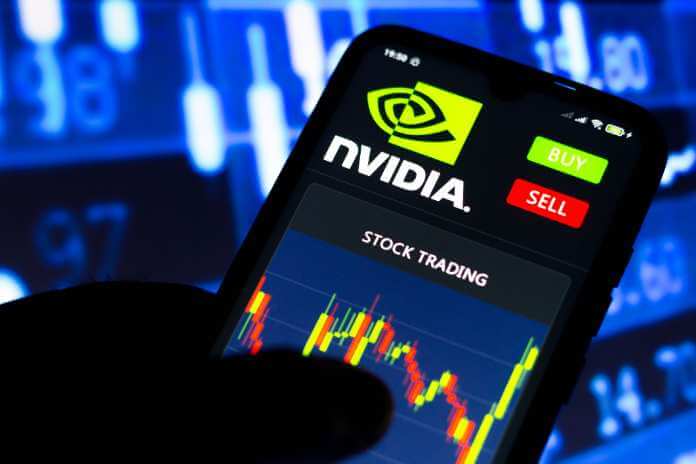During the November 2021 tech peak, NVIDIA Corporation’s (NASDAQ:NVDA) market cap hit an outrageous high of more than $800 billion. Nvidia’s stock reached an all-time high of over $350 during this bubble period, trading at more than 100 times TTM non-GAAP EPS (approximately 40 times TTM sales). The Fed punctured the ultra-high multiple bubbles, causing several stocks, including Nvidia, to fall.
Nvidia posted results aligned with its preannounced statistics but fell well short of earlier forecasts and experts’ predictions. Furthermore, the company’s guidance was underwhelming. Nvidia is not just dealing with overvaluation issues and a difficult macroeconomic environment. The firm has entered a catastrophic downturn, and the market is most likely underestimating how terrible Nvidia’s condition is.
The End Of An Era
The surge in Ethereum and other cryptocurrency-related purchases boosted Nvidia’s income significantly. When we look at Nvidia’s rising sales in 2020/2021, we see that this period corresponds with a big bull market in Ethereum and other digital assets. However, the corporation is now experiencing significant revenue declines. Last quarter, Nvidia’s cryptocurrency mining processor (“CMP”) revenues fell 66% yearly to $140 million. While the business has a specialized CMP GPU line for cryptocurrency mining, some of its gaming GPUs were also sold to cryptocurrency miners.
The biggest difficulty Nvidia is now facing is Ethereum’s shift away from GPU mining. In recent years, Ethereum has been the driving force behind cryptocurrency-related mining GPU sales. However, Ethereum is transitioning away from expensive GPU mining, and the transition from proof-of-work to proof-of-stake should be completed shortly.
Proof-of-stake is significantly less demanding and demands far fewer computer resources than proof-of-work. As a result, the Ethereum network will not require an increasing number of GPUs. On the contrary, as time passes, there will certainly be an unusually large number of unused GPUs.
Another factor for Nvidia’s strong revenue growth was GPU scarcity. In 2020/2021, you’d be lucky to find a good GPU at MSRP. Because of the GPU scarcity, Nvidia’s graphic cards may retail for double the MSRP or more in many situations during this period. Naturally, this phenomenon contributed greatly to the company’s increasing revenues. We might assume that this dynamic occurred partly due to the significant demand from the bitcoin market.
What We Are Left With Now
Ethereum is abandoning GPU mining. Bitcoin and other digital assets rely heavily on ASIC miners rather than GPUs. Nvidia’s CMP GPU sales are down, and overall “gaming” revenues are down 33% yearly. As a result, Nvidia is in serious trouble. A significant chunk of the company’s profits might be lost forever.
Furthermore, Nvidia will no longer profit from the bitcoin market’s expansion. Furthermore, the corporation will no longer profit from the surge in GPU prices that occurred in 2020/2021. Instead, as the firm moves forward, Nvidia will face the dilemma of cheaper GPUs, reduced margins, and declining profitability.
Since its peak last year, the price of Nvidia’s RTX 3080 GPU has dropped by around 65%. This picture depicts Nvidia’s GPU market and the company’s difficulties. Prices will most likely steady and maybe rise somewhat. However, large price increases are unlikely to occur very soon. After years of scarcity, the market for Nvidia GPUs is now oversaturated. We are now experiencing the reverse effect and have most likely not seen the full extent of the surplus. We must anticipate the possibility that undesirable mining GPUs would flood the market, worsening the supply/demand problem.
We See It In The Results
Nvidia’s second-quarter numbers were surprisingly low, and “difficult macroeconomic conditions” could not excuse a 19% revenue reduction yearly. Nvidia was priced at more than 100 times trailing profits less than a year ago and now has YoY growth of only 3%. Furthermore, despite a 3% increase in income, the company’s operational expenditures increased by 36% year on year. As a result, gross margins are much lower, operating income is down by 80%, and net income is down by 72%.
Now, Let’s Check the Guidance
The business forecasted $5.9 billion in sales for the third quarter, 15% less than the average expectation of $6.95 billion. The company’s second straight QoQ fall will be $5.9 billion, or a 17% YoY reduction. Furthermore, the business forecasted GAAP and non-GAAP gross margins of 62.4% and 65%, respectively. However, such a significant increase in gross margin would be difficult to accomplish, and the business may post gross margins closer to 45-50%, which is far lower than its predictions. Nvidia’s GPU division may continue to struggle, resulting in decreased profitability and a deterioration of the company’s long-term reputation.
Valuation – Still Too High
Nvidia has gone through a period of significant repricing. While the company is not selling at a multiple of 100 times trailing earnings, it is nonetheless costly. Furthermore, we must remember that the market has begun to reduce Nvidia’s earnings and may not be finished.
One component stands out. The stock is still prohibitively pricey. With EPS of $3.75 predicted this year, Nvidia’s P/E ratio is 45, which is still quite high. Next year’s earnings per share are expected to be $5.46. However, this statistic appears to be excessively high, cannot be believed, and will most likely be corrected downward. Nonetheless, even with the $5.46 EPS expectations, Nvidia has a P/E ratio of more than 30. Over thirty times doubtful predicted profits is a steep price for a firm under the major top and bottom-line difficulties and likely to experience more earnings estimate decreases.
In fiscal 2024, I expect Nvidia will profit around the low end of current forecasts, around $4 per share. Furthermore, Nvidia warrants a lower P/E multiple due to poor performance and uncertainties. I’m happy with a forward P/E of 25-30 on a $4 EPS projection for next year. This dynamic leads us to a target buy-in price of $100-120. In my opinion, Nvidia becomes a buy in this area, but above $170, the stock is a sell. This stock will be revisited in the $100-120 range. There are better stocks to purchase till then.
Featured Image : Megapixl © Rafaelhenriquepress

















